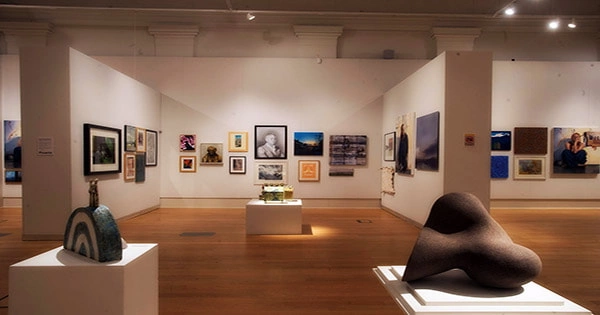An art exhibition is the display of a single artist’s or a group of artists’ creative artistic works. These shows are seen by art students who want to see art up close. Such outings broaden their horizons. Some individuals go to such events for pure entertainment or to kill time. Commercial gallery exhibitions are frequently exclusively made up of for-sale products, however, they may be complemented by non-sale pieces. In most cases, visitors must pay (in addition to the regular museum admission fee) to enter a museum display, but not a commercial exhibition in a gallery. Individual exhibits, also known as “solo shows,” and group exhibitions, sometimes known as “group shows,” reflect back on the work of a single artist. A trip to an art museum broadens one’s knowledge of the course’s material and also elevates certain premiums, among other things, which will encourage many individuals to complete the course without hesitation. This also aids us in gaining a thorough understanding of the art culture that exists in today’s society. Thus, for everyone with an interest in art, a visit to an art gallery brings out the most of the experience. The show was placed right in the heart of the city. The hall’s entry was beautifully built, and the structure was flanked by lovely rose gardens and fountains. Most significantly, the journey was enjoyable since it allowed me to visit a location that I had not seen in a long time and exposed me to countless beautiful works of art by a variety of respected artists. In addition, I got the opportunity to speak with a few art specialists who can make life easier for everyone working in an exhibition hall. The entrance charge to the art hall was maintained low to encourage more visitors, and students received a special discount. There were many different sorts of paintings on show, depending on the painters’ country of origin, ethnicity, and even the painting’s topic. Asian, Aboriginal (native Australian artists), and Caucasian artworks were also on the show (white painters from Australia, America, the United Kingdom, and other western countries). There was also a part with paintings by art students on exhibit, and I must say, the skill and sheer inventiveness of the painters, despite the fact that they were still students, was astounding.

The visitors were given thorough information about the paintings, such as the painters’ country of origin, the topic of the paintings, ethnicity, and so on. Our art professors taught us to pay close attention to each and every work of art. They instructed us to write down our thoughts and opinions about the artworks in a notebook. The art pieces may be displayed at museums, art halls, art clubs, or private art galleries, or in a coffeehouse where the primary business is not the display or sale of art. There is a significant distinction made between displays in which part or all of the pieces are for sale, often in private art galleries, and those in which they are not. An event may be planned for a specific occasion, such as a birthday, anniversary, or remembrance. The paintings depicted a variety of subjects, including colonial landscapes, mountain panoramas, ocean scenes, and festivals, among others. The gallery was packed with students, parents, and their children because it was a public holiday. It was incredible to see even tiny toddlers appreciate abstract art. I was on the verge of passing out due to the high cost of paintings. Furthermore, because both the individual art functions and the art thankfulness content are structured and defined in the same organization, the systematic plan of the centerpieces and their portrayals aid in comprehending the individual art functions as well as the art thankfulness content. The artist’s name, location, and time of presence are the first things to notice in every piece of artwork, whether from the historical center or from the content. In essence, art is a non-generic means of conveying feelings. A technique, on the other hand, is useless until and until fans can see and comprehend it. Art is, at its most basic level, an expression of emotion and a deep-seated feeling. Things that can be felt, on the other hand, are more difficult to write down. Coral Gables, an art show, maybe a fantastic venue for artists to discover the finest ways to explain their work. Catalogs are frequently seen at art displays, and they contain descriptions and articles about the artwork that have been examined and written by notable art academics. These catalogs assist artists in jotting down intriguing headlines, ideas, art descriptions, and definitions. It was a fantastic learning and inspirational event for both us and our professors. We stored the facts and our points of view that we scribbled in our notebooks secure in our luggage for discussion in our next lesson. We returned enriched by the evening’s art presentation.
















